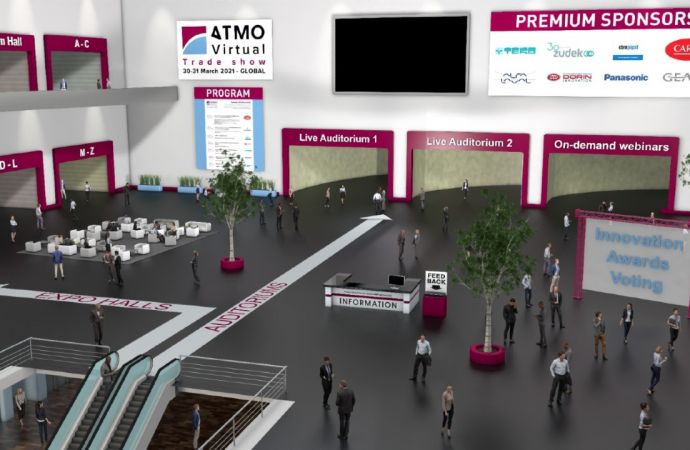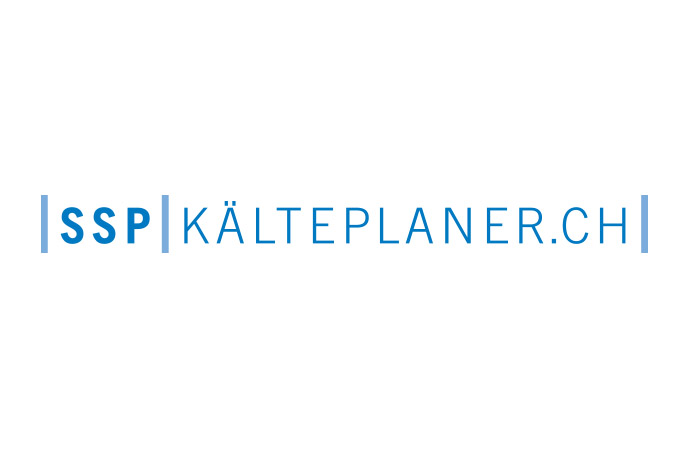A seminar organised by eurammon at Chillventa last week brings forth the North American and Brazilian perspectives on the use of ammonia as a natural refrigerant. ammonia21.com participated and reports.

Chillventa, the international trade fair for refrigeration, air conditioning, ventilation and heat pumps, gathered more than 880 HVAC&R companies in Nürnberg, Germany, last week, attracting an estimated 29,000 experts and professionals of the heating and cooling sector. At this occasion, eurammon, the European Initiative for Natural Refrigerants, took the opportunity to organise a seminar on ‘Applications with Natural Refrigerants - country situation and experiences’.
Ammonia in North America
Bruce Badger, President of the International Institute of Ammonia Refrigeration (IIAR) took the stage to present the state-of-play of ammonia technology and use of ammonia as a natural refrigerant in North America.
Currently, ammonia is used in over 95% of industrial applications in food and beverage processing and storage in the US. Ammonia is also promoted by the EPA Green Chill Program for commercial usage and some progress has been made in roof mounted packaged systems for US supermarket applications using propylene glycol or CO2 secondary coolants.
The American Society of Heating, Refrigerating,and Air-Conditioning Engineers (ASHRAE) has modified standard 34 to pass the 2L refrigerant classification including ammonia and is considering to modify standard 15 to expand the occupancy class for ammonia based upon the 2L rating, with the use of gas detection and mandatory ventilation.
In the last two years, significant change could be noticed in the industrial refrigeration industry in North America. Much of this change focused on a new emphasis toward improved refrigeration system safety and efficiency coupled with smaller refrigerant charge system designs. Other changes were in response to the growing number of industrial refrigeration users who are required to replace R-22 and therefore switched to ammonia or ammonia/CO2 cascade systems.
“Green” initiatives undertaken by both the government and private sectors have provided much needed incentives to build more efficient new buildings and improve existing facilities. Because ammonia and CO2 are both natural refrigerants, the use of these substances for industrial refrigeration systems improves the “green” rating for these installations, resulting in greater project subsidies.
For many years, training was thought to be the single most important aspect of refrigeration system safety. This holds still true, however more emphasis is also being placed on improved refrigeration system designs with advanced safety features, such as 20 bar pressure vessels throughout the system, emergency pressure control systems (EPCS) to prevent over pressure releases to atmosphere, reduced system charge designs and “off peak” operation. Reducing the opportunity for accidents through improved system design has been shown to be as effective as proper training in reducing ammonia releases and personnel injury.
Ammonia in Developing Countries
Tomaz Cleto from Yawatz Engenharia Ltda, introduced the Brazilian situation and experiences with regards to the application of ammonia as a natural refrigerant.
Brazil's industrial refrigeration is to 80% dominated by ammonia, particularly in the food industry with huge plants but low ammonia charge. The Rio Verde refrigerated plant for example features:
Despite the successful use of ammonia as refrigerant, the Brazilian government will not actively support a phase-down of HFCs, neither is a specific promotion of natural refrigerants foreseen in the HCFC phase-out management plan to enter into force in 2011.
“We cannot wait for legislation” to encourage the uptake of natural refrigerants, says Mr. Cleto. Companies and industry will have to move ahead and take the initiative to introduce natural refrigerants on a voluntary basis.
Ammonia in North America
Bruce Badger, President of the International Institute of Ammonia Refrigeration (IIAR) took the stage to present the state-of-play of ammonia technology and use of ammonia as a natural refrigerant in North America.
Currently, ammonia is used in over 95% of industrial applications in food and beverage processing and storage in the US. Ammonia is also promoted by the EPA Green Chill Program for commercial usage and some progress has been made in roof mounted packaged systems for US supermarket applications using propylene glycol or CO2 secondary coolants.
The American Society of Heating, Refrigerating,and Air-Conditioning Engineers (ASHRAE) has modified standard 34 to pass the 2L refrigerant classification including ammonia and is considering to modify standard 15 to expand the occupancy class for ammonia based upon the 2L rating, with the use of gas detection and mandatory ventilation.
In the last two years, significant change could be noticed in the industrial refrigeration industry in North America. Much of this change focused on a new emphasis toward improved refrigeration system safety and efficiency coupled with smaller refrigerant charge system designs. Other changes were in response to the growing number of industrial refrigeration users who are required to replace R-22 and therefore switched to ammonia or ammonia/CO2 cascade systems.
“Green” initiatives undertaken by both the government and private sectors have provided much needed incentives to build more efficient new buildings and improve existing facilities. Because ammonia and CO2 are both natural refrigerants, the use of these substances for industrial refrigeration systems improves the “green” rating for these installations, resulting in greater project subsidies.
For many years, training was thought to be the single most important aspect of refrigeration system safety. This holds still true, however more emphasis is also being placed on improved refrigeration system designs with advanced safety features, such as 20 bar pressure vessels throughout the system, emergency pressure control systems (EPCS) to prevent over pressure releases to atmosphere, reduced system charge designs and “off peak” operation. Reducing the opportunity for accidents through improved system design has been shown to be as effective as proper training in reducing ammonia releases and personnel injury.
Ammonia in Developing Countries
Tomaz Cleto from Yawatz Engenharia Ltda, introduced the Brazilian situation and experiences with regards to the application of ammonia as a natural refrigerant.
Brazil's industrial refrigeration is to 80% dominated by ammonia, particularly in the food industry with huge plants but low ammonia charge. The Rio Verde refrigerated plant for example features:
- Freezing Tunnels: 13000 kW (-38/-10°C) Cold Stores – LT: 5500 kW (-30/-10°C)
- Cold Stores – MT/ IT: 30000 kW (-10/+35°C)
- Chilled Water/ AC: 15000 kW (0/+35°)
- BUT only 1/5 of a Standard Refrigerant Charge
Despite the successful use of ammonia as refrigerant, the Brazilian government will not actively support a phase-down of HFCs, neither is a specific promotion of natural refrigerants foreseen in the HCFC phase-out management plan to enter into force in 2011.
“We cannot wait for legislation” to encourage the uptake of natural refrigerants, says Mr. Cleto. Companies and industry will have to move ahead and take the initiative to introduce natural refrigerants on a voluntary basis.
MORE INFORMATION
Related stories



















